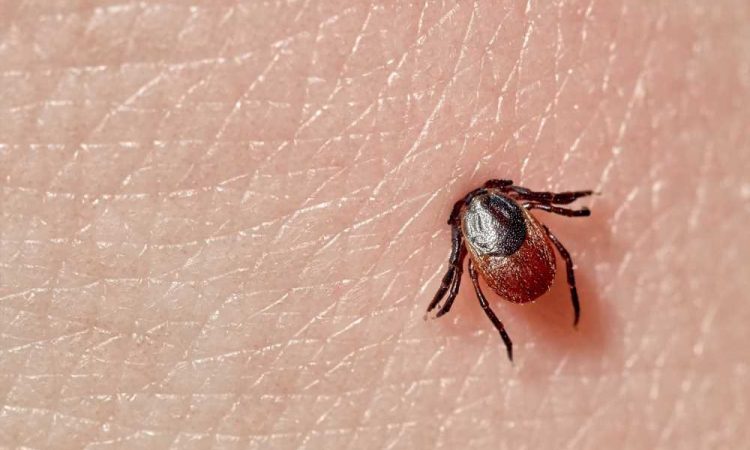The evolving emergence of alpha-gal syndrome in the United States

In a recent Centers for Disease Control and Prevention’s (CDC) Morbidity and Mortality Weekly Report (MMWR), researchers investigated alpha-gal syndrome (AGS) prevalence and geographic distribution in the United States (US) based on testing reports from a commercial laboratory.
 Study: Geographic Distribution of Suspected Alpha-gal Syndrome Cases — United States, January 2017–December 2022. Image Credit: Evgeniyqw/Shutterstock.com
Study: Geographic Distribution of Suspected Alpha-gal Syndrome Cases — United States, January 2017–December 2022. Image Credit: Evgeniyqw/Shutterstock.com
Background
AGS is a potentially fatal tick bite-related allergy characterized by immunoglobulin E (IgE)-based hypersensitivity to the α-gal oligosaccharide (galactose-α-1,3-galactose), which is present in most non-primate mammalian meat and derived dairy products, including milk, and a few pharmaceutical products.
AGS symptomatology and severity vary from person to person, and there is no definitive therapy or cure. Even though AGS is a major clinical and public health concern for US residents, its prevalence and geographic distribution are unknown due to the lack of a national monitoring system.
About the report
In the present report, researchers highlighted the evolving AGS emergence, which can help local and state health agencies launch national surveillance efforts to aid public health decision-making, geographically target high-risk populations for public health outreach, improve community awareness about tick bite prevention to minimize AGS acquisition risk and provide healthcare provider (HCP) education for more timely diagnosis and treatment.
Deidentified information from alpha-gal-targeted IgE (sIgE) test reports submitted in the US between 1 January 2017 and 31 December 2022 was provided by a US laboratory, containing data on patients’ identification numbers, residences, zip codes, sex, age, testing date, and results. The team excluded findings with invalid state entries or those from non-US regions.
The team calculated risk ratios to assess relationships with positive results. Patient residence counties were ascertained from postal code information. The count of infected individuals per one million population yearly was determined for US counties using the Census Bureau estimates. An alpha-gal sIgE test report ≥0.1 kilounits per liter (kU/L) was considered positive.
Counties having suspected alpha-gal syndrome cases were allocated to either of the three categories: low (less than 11 alleged cases per one million population per year), medium (11 to 87 suspected cases per one million population per year), and high (more than 87 suspected cases per one million population per year).
Since no information was available to correlate positive reports with clinical signs and symptoms of AGS, all cases with positive test reports were considered suspected.
Results
Test reports from 79.0% of individuals with available geographic information were used for generating maps. During the period, 357,119 reports of 295,400 individuals were uploaded from United States residences. Most individuals underwent testing only once, whereas 12% (n=36,257) underwent testing multiple times.
Among the tested individuals, 188,532 (64%) were women; nevertheless, among individuals with positive results, 42.0% were men, whereas 24.0% were women.
Individuals with positive test results were considerably older than those with negative results (mean age of 48 versus 41 years). Among individuals aged 70.0 years and above, 45% received positive results.
In total, 90,018 (31%) individuals received positive test reports, and the number of positive individuals rose from 13,371 (2017) to 18,885 (2021) within four years.
Each year, 30,000 to 70,000 individuals underwent testing, with a peak of 66,106 individuals in 2021. The proportion of individuals who received positive test results was about 30% during the period, with the number of infected individuals increasing yearly through 2022.
Annually, 13,371 to 18,885 individuals received positive test results (a mean of 15,003). Among 233,521 individuals with accessible geographic information, suspected cases were predominantly observed in the midwestern, southern, and middle-Atlantic US counties, particularly the regions of Kansas, Oklahoma, Missouri, Arkansas, Tennessee, Mississippi, Illinois, Kentucky, North Carolina, Indiana, Maryland, Delaware, and Virginia.
Most suspected cases of AGS were detected in Virginia and New York counties, such as Bedford and Suffolk, with 1,511 and 3,746 cases, respectively. Four percent of suspected alpha-gal syndrome cases were identified in Suffolk, and the Muhlenberg and Charlotte counties reported 6,107 and 12,273 cases per one million population per year, respectively.
AGS prevalence was moderate-to-high in Wisconsin and Minnesota, with 238 suspected cases among 2,456 individuals (10%). Suspected cases were mainly reported in regions of Amblyomma americanum tick predominance.
The geographic distribution of AGS was similar to that of ehrlichiosis, caused by Ehrlichia ewingii and E. chaffeensis, which are transmitted by Amblyomma Americanum.
Conclusions
Overall, the findings highlighted the rising trends in AGS prevalence among US residents between 2017 and 2022, with states with established lone star tick populations being the most impacted, while suspected alpha-gal syndrome cases were also reported in locations outside of this tick's range.
The findings support AGS in community outreach addressing tickborne illness prevention efforts, especially as tick exposures resulting from AGS may have long-term health consequences.
It is uncertain if the rising number of suspected alpha-gal syndrome cases reflects higher awareness, increased emergence, or both.
Since only one clinical laboratory was used, the results may underestimate the number of individuals who sought testing and had positive results. Furthermore, the results did not take into consideration travel-related or false-positive instances.
Thompson JM, Carpenter A, Kersh GJ, Wachs T, Commins SP, Salzer JS. (2023) Geographic Distribution of Suspected Alpha-gal Syndrome Cases — United States, January 2017–December 2022. MMWR Morb Mortal Wkly Rep. doi: 10.15585/mmwr.mm7230a2. https://www.cdc.gov/mmwr/volumes/72/wr/mm7230a2.htm?s_cid=mm7230a2_w
Posted in: Medical Science News | Medical Research News | Disease/Infection News | Healthcare News
Tags: Allergy, Education, Ehrlichiosis, Healthcare, Hypersensitivity, Immunoglobulin, Laboratory, Lone Star Tick, Meat, Mortality, Public Health, Syndrome

Written by
Pooja Toshniwal Paharia
Dr. based clinical-radiological diagnosis and management of oral lesions and conditions and associated maxillofacial disorders.